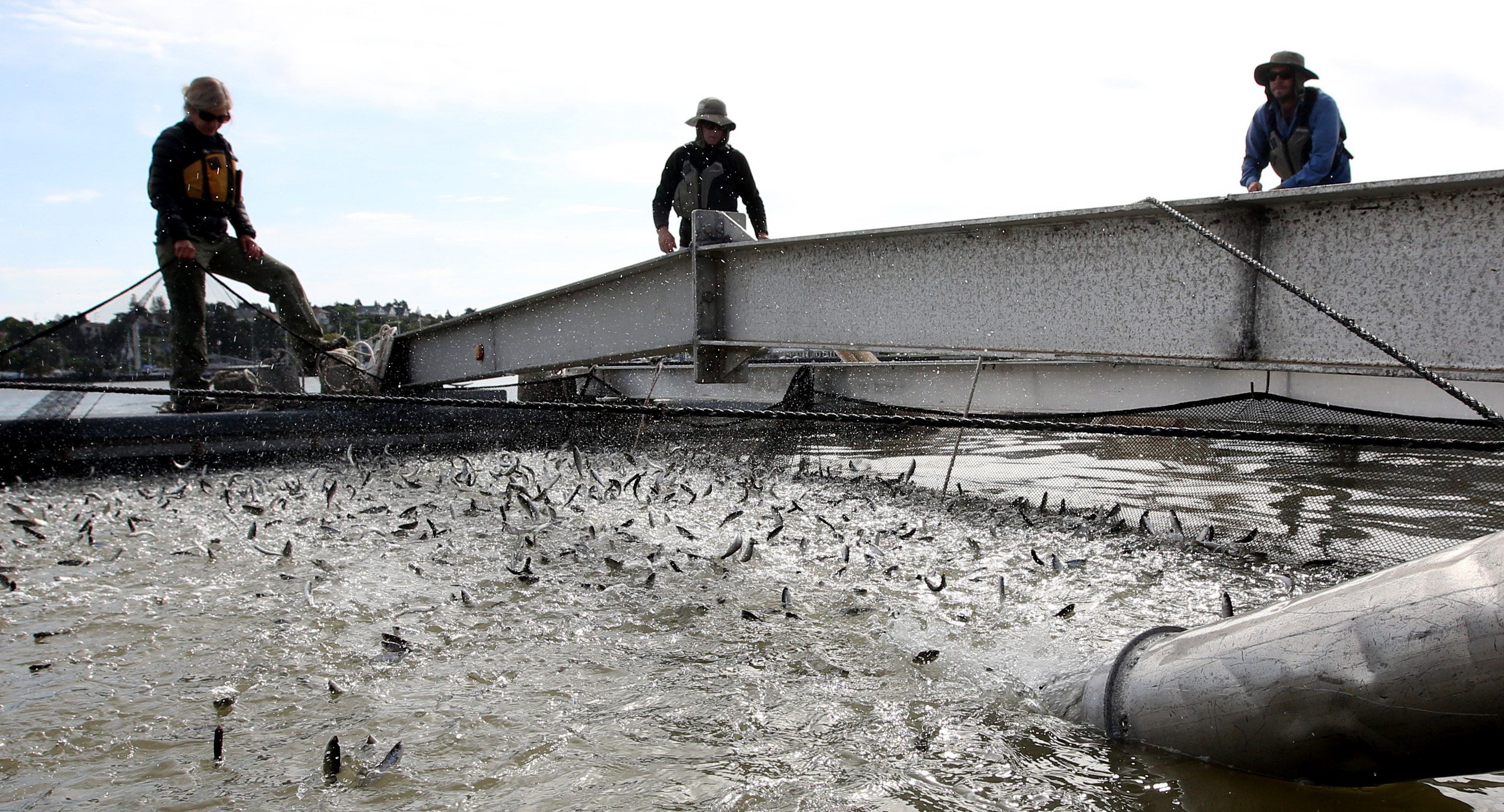The struggle between endangered fish and thirsty California farmers requires an urgent answer. But for many, the Save Our Salmon (SOS) Act just passed by the U.S. House of Representatives isn’t it.
Introduced by Rep. Jeff Denham (R-Turlock), H.R. 4582 lays the blame on predatory, non-native fish species like striped bass for the dwindling population of endangered salmon in the Sacramento-San Joaquin Delta. The bill eliminates a doubling requirement on bass and other predator fish established with the 1992 Central Valley Project Improvement Act – the idea being that looser restrictions on bass fishing could help boost populations of native Chinook salmon, steelhead trout and smelt, and free up more Delta water currently being held under the auspices of the Endangered Species Act (ESA).
There’s only one problem: Fisheries experts, policy analysts and the scientific community at large aren’t buying it.
“Predation removal is not a solution,” said Carson Jeffres, a researcher in aquatic ecology and the field and lab director at the Center for Watershed Sciences at the University of California, Davis. Jeffres, who coauthored this recent article about predation impacts on Delta native species, said predators like striped bass have been part of the Delta ecosystem since the 19th century. “There have been predation and prey as long as there have been rivers,” he said. “If you remove one predator, you’re never going to remove all of them. There’s always something else out there that can eat [the salmon].”
More importantly, reducing the population of one predator species can have unforeseeable – and potentially even more harmful – knock-on effects. For example, fishing out more bass could lead to the increase of inland silverside, one of bass’s primary food sources. What do inland silverside feed on? Smelt eggs and larvae. The same could be said for threadfin shad, which prey on juvenile salmon and are in turn kept in check by bass.
“There are all of these unintended consequences that haven’t been necessarily thought out. This very simplistic idea of managing a food chain is much more complicated than one fish eating another fish,” he said. “It’s a system problem, not a silver bullet problem.”
The risk that his legislation might backfire, biologically speaking, isn’t deterring Rep. Denham. On the contrary, while he says it is primarily aimed at saving salmon, Denham is forthright about the broader goal – to bring more Delta water to farms and communities further south that feel they’ve been hamstrung by ESA provisions on endangered fish species.

Young salmon, called smolts, are loaded into a floating net suspended on a barge at Mare Island, Calif. (Rich Pedroncelli, AP)
“More and more growers are paying for water and not seeing their deliveries,” Denham told Water Deeply. Bass, he said, are “devastating our native fish. People throughout our community want an ecosystem that allows our fish species to be able to populate, especially those that are threatened or endangered, but they also expect a water delivery and storage system that works well. This is one of the tools in our toolbox.”
Denham isn’t alone in seeking to cull predatory fish from the Delta. The Coalition for a Sustainable Delta last month filed a petition with the California Fish and Game Commission seeking to modify the size and bag limits for striped and black bass in an effort to help salmon populations recover. The California Farm Bureau Federation, Western Growers, California Chamber of Commerce and various water districts and agencies have backed the petition, saying the state is enforcing onerous water pumping restrictions at a time when farms and communities need the water.
But for many, scapegoating predator species in order to boost salmon stock and free up water smacks of a political power play – one being driven more by public relations and agricultural interests than by ecosystem science.
“Congress really ought not to be taking actions on issues that are scientific questions when the scientific perspective is that striped bass don’t have significant impact on [salmon and smelt] populations,” said Ron Stork, policy director at Friends of the River, based at Sacramento.
During California’s punishing drought, most water release into the Delta was done for the purpose of maintaining water quality, in order that it didn’t become salty with the upflow of seawater from the Bay. However, “the narrative has been, ‘We can’t receive as much water in these drought years because the water is going to support these endangered fish,’” said Stork. “There’s some truth to that, but the majority of the truth is that the water has been used to keep the state and federal pumps from getting brackish and therefore unable to pump at all.”
Denham, he added, is “standing up for generic farmers who are being ‘put upon’ by these federal and state officials trying to endorse the Endangered Species Act. That’s good politics for him, it just isn’t good science.”
Jeffres, the aquatic ecology researcher, agrees. “They’re starting to see this idea of having salmon security as water security. [But] the ecosystem is in crisis, and predatory reduction as a means to salmon and smelt recovery is not the most nuanced idea for getting to where we want to be,” he said.
The real problem is that salmon are spawning in rivers where no real habitats exist, and are making their way to the ocean much smaller and weaker than they need to be in order to survive. With H.R. 4582, “it allows them to say, ‘Hey, we’re doing something.’ But if you really want to have salmon, you have to have an ecosystem that works. You have to restore the off-channel habitats, all the tributaries – you need habitat from spawning grounds to the ocean. Taking out one piece of the [ecosystem] won’t make it work.”
